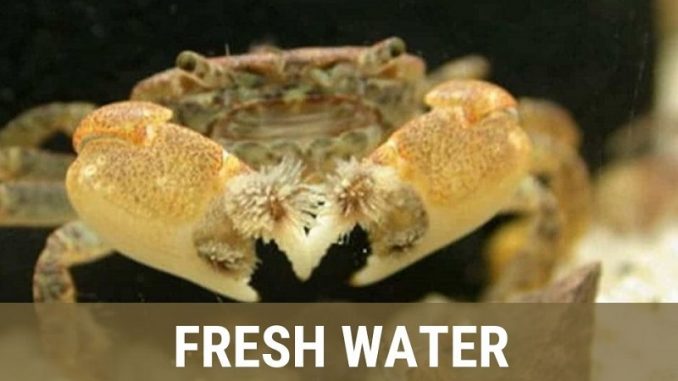
Crabs are an exciting way to branch out from keeping fish. They are great for trying something more exotic without making care too difficult.
Freshwater Pom Pom Crabs are definitely exotic. As a new introduction to the aquarium hobby, very little is known about them. This has led to a lack of information on the internet.
However, aquarists have learned what conditions they prefer, and they are hardy creatures that can tolerate small mistakes.
They are undeniably cute crustaceans, mainly due to their tiny size and unique “pom poms” on their claws.
Another attraction is that they make great tank mates in a community. They can live alongside an array of different creatures. You can’t say this for all freshwater crabs.
This guide will cover the essential information you need when caring for Freshwater Pom Pom Crabs.
TABLE OF CONTENTS
Freshwater Pom Pom Crab Facts & Overview
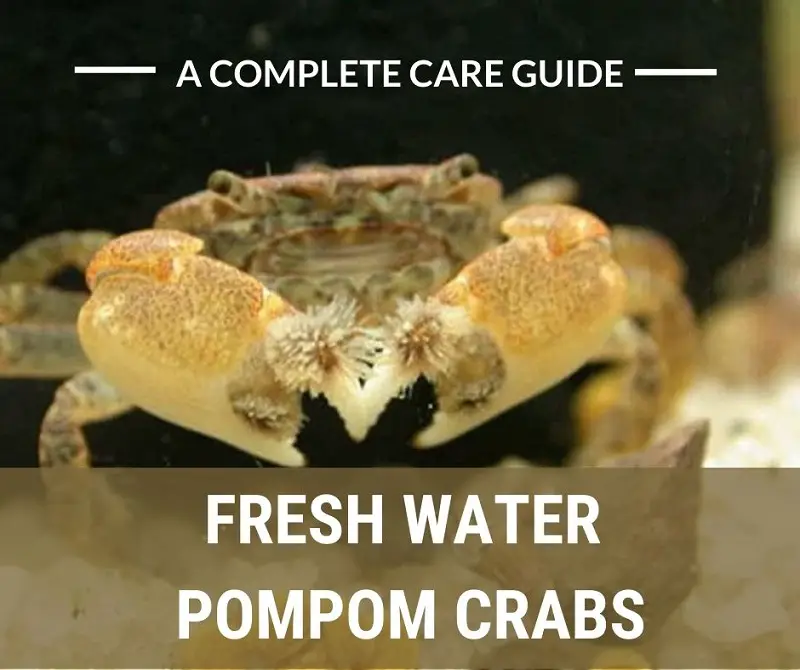
| Category | Rating |
| Care Level: | Easy |
| Temperament: | Peaceful |
| Color: | Speckled yellow/brown |
| Lifespan: | Around 1 year |
| Size: | Up to 1 inch |
| Diet: | Omnivore |
| Family: | Grapsidae |
| Minimum Tank Size: | 5 gallons |
| Tank Set-Up: | Freshwater will lots of caves |
| Compatibility: | Small and peaceful tank mates |
The Freshwater Pom Pom Crab (Ptychognathus barbatus) is a crustacean in the Grapsidae family. They are sometimes referred to as Hong Kong Crabs or Cheerleading Crabs.
The species is fairly new to the fishkeeping hobby which means there is very little information available out there about them. Even scientific research is limited.
Nonetheless, they are becoming increasingly popular, likely due to their small and hardy nature that makes them suitable for nano setups.
One thing we do know is where they are from. Wild populations have been found in tropical areas such as China, Comoros, India, Indonesia, Japan, Madagascar, Malaysia, and Taiwan.
This species is easily confused with a marine species that have the same common name; the names are for different reasons though.
The freshwater version gets its name from their claws that have filter fans attached, whereas the marine version gets its name from anemones that they carry around in their claws.
Since this species is new to the hobby, and because they are quite rare anyway, finding a stock near to you could be difficult. Search around online, or call up pet stores to find your nearest stock.
Depending on where you live, a Freshwater Pom Pom Crab could cost you between $10 and $20.
Their lifespan can vary dramatically too, but most individuals don’t survive longer than a year in captivity, even in the healthiest of environments.
Typical Behavior
They are a fully aquatic crab species, meaning that they spend their entire lifecycle submerged in freshwater; from larvae to adults.
This saves you the trouble of designing an aquarium with a mixture of water and land. However, they will spend short periods on land if given the opportunity.
Freshwater Pom Pom Crabs are more active than most crab species. They can often be seen wandering around the tank, usually to scavenge some food.
Their active behavior can sometimes be a problem because they are very good climbers. You might find them hiding behind equipment.
The tank must be secured with a tight-fitting lid to prevent them from escaping.
They are also good at digging. They use their claws to move sand around and burrow into the substrate.
Though they are active, they are mostly peaceful. Occasionally males will display to each other, but it rarely results in injury. Any other tank mates will essentially be ignored by your Pom Poms.
No matter which crustaceans you keep, all will go through molting. This is the process of shedding an old exoskeleton in order to develop a larger one, to fit a growing individual.
It takes a couple of days to develop the new exoskeleton, during which time our crabs will be particularly vulnerable because they no longer have a hard shell for protection.
To reduce the risk of damage, they will likely hide away in caves, or even burrow, during the process. If they ever disappear, this could be why.
Remove discarded exoskeletons when you see them on the substrate, or else they will be broken down and raise nitrate levels.
Appearance
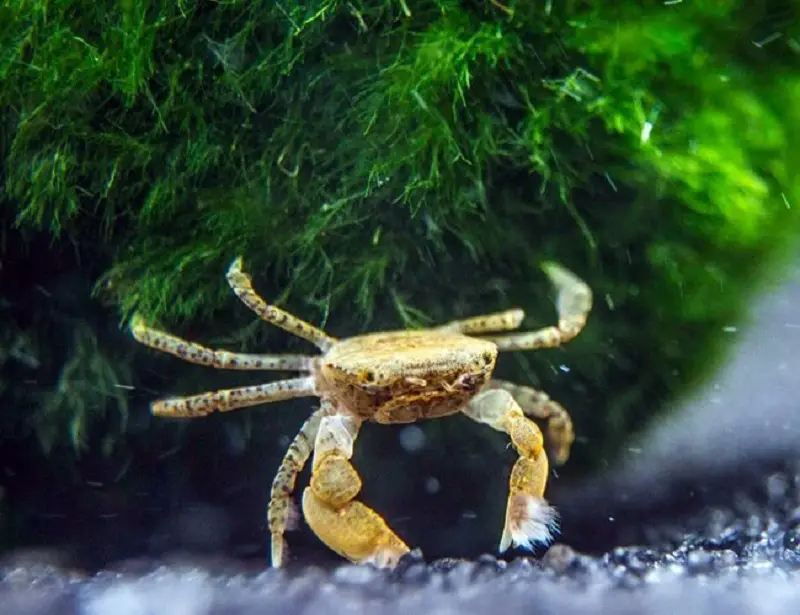
Most people can picture a crab. Pom Pom Crabs are typically just a much smaller version of the crab you’d picture in your head; they don’t grow bigger than an inch.
Apart from their size, the main thing that sets them apart is their claws (called chelae). Attached to the pincers are filter fans. They aren’t necessarily used for filter-feeding, but they sometimes catch food which the crab will then eat.
The filter fans are small and make the crabs look like they are holding pom poms, hence their name.
The claws are also used as tools to manually pick up food, move debris, burrow, and fight.
This species cannot boast a bright array of colors; most of the body is speckled yellow or brown. This helps them to blend into their environment, which is particularly important because a creature this small doesn’t want to be spotted by predators.
Their body is broad with a wide carapace to protect their vital organs. Attached to the body are ten legs (including the pincers), which is a characteristic of all Decapods.
They have a pair of sensitive eyes which each extend from the body via a stalk. This helps them to see in virtually 360 degrees if needed.
Two pairs of antennae are located by the eyes. The longer pair are used to feel the environment and the shorter pair are used to taste/smell.
To determine the sex of your crabs you need to look at their undersides. Males have a distinctive V-shaped section, but females do not. Males tend to have larger claws with bigger “pom poms” too.
Habitat and Tank Conditions
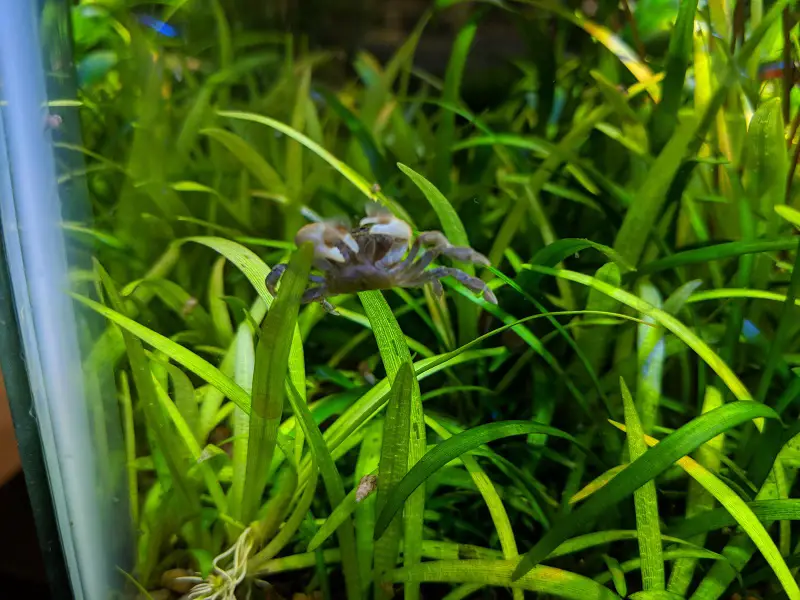
The Freshwater Pom Pom Crab has a broad geographic distribution. They have been spotted in China, Comoros, India, Indonesia, Japan, Madagascar, Malaysia, and Taiwan.
These areas share similar conditions, which is why the crabs live there. It is these conditions that you must recreate at home to keep your pets healthy.
Their natural habitats are narrow rivers in tropical areas. The riverbed would be sandy and covered with rocks and debris to create cracks and crevices.
The water would be warm with a relatively neutral pH. There would be plenty of light, though Freshwater Pom Pom Crabs spend much of their time hidden from it.
They tend to stay hidden under rocks around the mouth of the river, sticking to the shallows.
Below we outline how you can set up your tank to meet all the needs of your Freshwater Pom Pom Crabs.
Tank Conditions
You first need to choose whether to provide some land for your crabs. They will make use of land if it’s available, but they do not require it. They function as fully aquatic freshwater crabs.
You can use a substrate or rocks to create land if you want it.
Layer the bottom of the tank in a sandy substrate. Pom Poms like to burrow and the fine grains make it easy.
Create lots of crevices using decorations, rocks, or driftwood. These are important places for crabs to hide.
It seems that these crabs can be kept with live plants without causing any damage; they won’t eat them, even though they happily accept vegetation as part of their diet.
Since this species burrows, they may uproot delicate plants, but this is unlikely. If you’re worried about live plants, you could float some on the surface out of reach instead.
There is a bit of debate around the ideal water chemistry, but a temperature of 72-82°F and a pH of 7.0-7.2 usually create a compatible environment.
You only need a heater and a filter in this tank. You don’t need to increase water movement with air/water pumps and standard lighting is fine.
What Size Aquarium do they need?
Freshwater Pom Pom Crabs are incredibly small, so you’d expect their minimum tank size to be very small to match. This is absolutely the case; a small group can be kept in just a 5-gallon tank.
Be aware that it is harder to maintain the right conditions in tanks this small though.
How Many Can be kept per gallon?
A small group of about 4 will be happy in a 5-gallon tank. You only need to allow for a couple of extra gallons per additional crab you keep.
They aren’t very territorial so they don’t need too much space each, though it’s always best to provide the biggest tank that you can.
Tank Mates
Not many crabs can be kept in a community aquarium, but Freshwater Pom Pom Crabs are an exception.
They can be kept alongside fish if you choose them correctly. Your crabs will ignore most fish, but some fish might try to eat your crabs.
You must pick peaceful species that are not large enough to eat these crustaceans. Some popular options include Pearl Danio, Neon Tetras, Dwarf Gourami, and Mollies.
Other invertebrates can work well as tank mates. Shrimps in particular get along very well with Freshwater Pom Pom Crabs. You could try Ghost Shrimp or Cherry Shrimp for example.
If you ever see these crabs eat shrimp, it is probably already dead. Either that or they are eating a discarded exoskeleton.
Small snails will be at risk of getting eaten because they are slow and couldn’t escape if needed.
Can You Keep Freshwater Pom Pom Crabs Together?
The only tank mates that they might show aggression to are fellow Freshwater Pom Pom Crabs. But even in this case, it’s usually only males displaying to each other.
So yes, you can keep them together. Fighting is rare, which means they are unlikely to injure each other.
Diet
Feeding Freshwater Pom Pom Crabs couldn’t be easier. As omnivores, they will eat both meaty foods and vegetation. There are lots of choices when designing their diet.
They are natural scavengers and spend much of their time in search of food. In the wild, they’d mostly find plant detritus and algae, but occasionally they’d come across small worms and crustaceans.
The first thing that comes to a lot of people’s minds is dried foods. This is likely because they are cheap, widely available, and easy to store.
These crabs will happily accept dried foods like flakes, pellets, and algae wafers.
The main problem with dried foods is that they are low on nutrients. You should always supplement a dried food diet with live/frozen food to ensure that your pets get everything they need.
Live/frozen foods are full of nutrients. You could try things like bloodworms and brine shrimp.
If you chop up some small pieces of green vegetables from your kitchen and drop them in the tank, they should be eaten by your crabs as they walk past. Remove the vegetables if they get ignored though.
Calcium is important to maintain a healthy Freshwater Pom Pom Crab. It’s needed for growth and developing a hard exoskeleton for protection.
If there isn’t enough calcium in their diet, you can add Calcium supplements. These should be available in most pet stores.
Feed these crustaceans 2-3 times a week. They can usually find enough food around the tank on their own, especially if there are other inhabitants that you’re feeding.
Care
This species is quite hardy which makes them relatively easy to care for. They can handle slight changes in the water chemistry without getting too ill.
However, maintaining a healthy aquarium should always be your priority; long-term exposure to poor conditions would likely lead to adverse effects.
Regular water changes are important for keeping the environment clean, as well as removing excess algae.
Use a water testing kit each week to check that parameters are where they should be.
Be sure that your aquarium is completely secured with a tight-fitting lid. Freshwater Pom Pom Crabs are good climbers and could easily reach the top of the tank, even if the water doesn’t go that high.
You don’t want to lose your crabs because of a secret escape attempt.
If you’re ever adding chemicals to the water, make sure that they do not contain copper because it is toxic to pretty much all crustaceans. Even a slight rise in copper concentrations could lead to fatalities.
Take particular care while your Pom Poms are molting. The process leaves them vulnerable for a couple of days until a new exoskeleton develops.
Leave them alone during this time or you risk damaging them.
Once molting is over, remove the old exoskeleton, otherwise, it will be broken down and affect the water chemistry.
Diseases should be rare, but not much is known about Freshwater Pom Pom Crabs in relation to disease. They will be able to pick up pathogens just like anything else you might keep in your tank.
If you notice that something is wrong, quarantine the individual and research some common crab illnesses.
Breeding
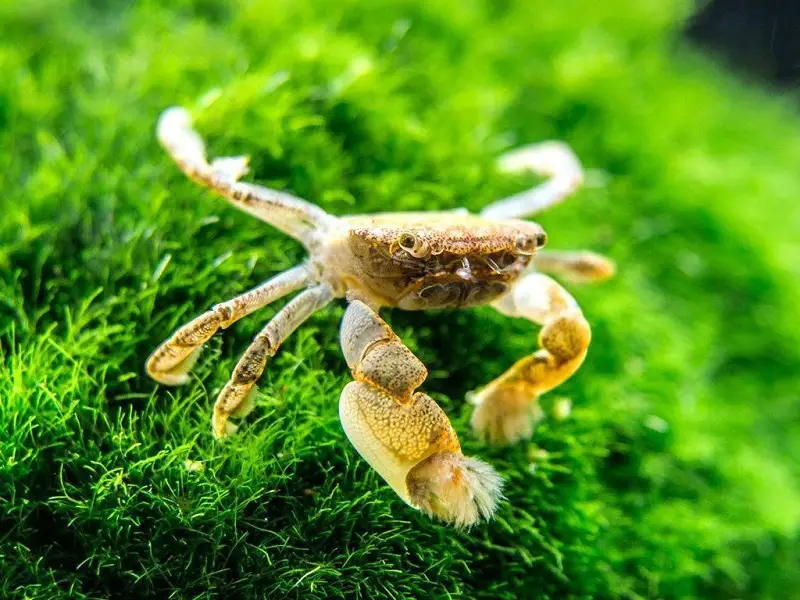
Successfully breeding Freshwater Pom Pom Crabs is virtually impossible. There is just too little known about them, so their reproductive behavior is largely unknown.
What makes things even harder are that adults live in freshwater, but larvae need brackish/saltwater for their development.
Not only would you need a separate setup with the preferred conditions for the larvae, but you’d also need to time the transfer of the young between the tanks perfectly.
If you really want to give it a go, you’ll need to make sure that you have a pair of one male and one female.
You can tell them apart by looking at their undersides, males have a V-shaped section, but females don’t. Males have bigger claws and filter fans too.
You’ll need to maintain the perfect conditions in your tank to hope that they will begin to mate naturally. This makes cleaning your aquarium especially important.
Changing the settings on your heater could help. Slowly raise the temperature to 82°F.
Unfortunately, raising the larvae is going to be trial and error because so little is known about a Freshwater Pom Pom Crab’s development.
There aren’t any reports of successful breeding in captivity, so if you manage it, make sure you share your experience!
Are Freshwater Pom Pom Crabs Suitable for Your Aquarium?
Most people will be able to look after Freshwater Pom Pom Crabs. Even if you have never kept crabs before, you’ll find that caring for this species is quite simple.
Unlike many crabs, they are very compatible with others. They are happy around fish and shrimps; there aren’t many squabbles between their own kind either.
They are very small creatures that can fit into small tanks, so they don’t take up much space in your house.
Their only downfall is that it is incredibly tough to breed this species at home, so look elsewhere if a breeding tank is your goal.
These adorable little crustaceans are wonderful recent additions to the aquarium industry. Adding some to your tank will help it to stand out against others.
Have you tried caring for Freshwater Pom Pom Crabs? Share your experiences in the comments below…

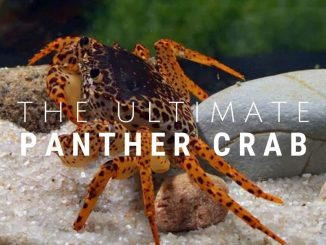
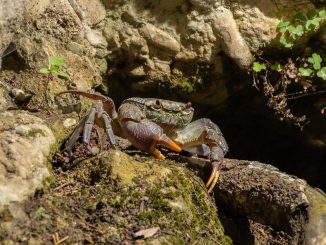
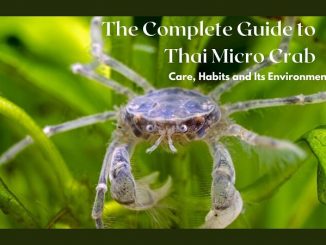
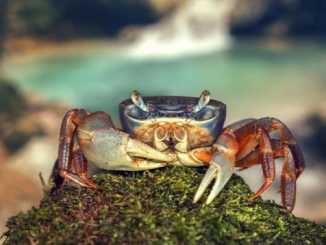
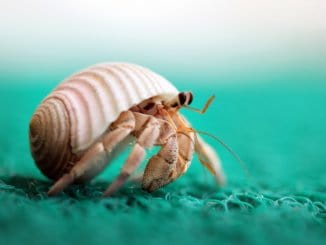
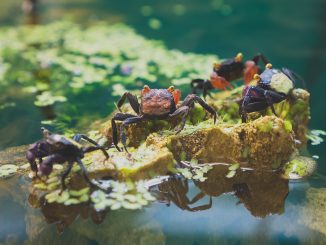
My name’s Devin Fan (can be found on Facebook) and happy to say as far as I know I’m the first to breed these crabs in captivity. Now have at least 10 happy babies living on a moss island in my 60 gallon tank. Lots of plants, shrimp and small fish in the tank as well. It’s not true that they’re fully aquatic as everyone has reported, actually the babies all stay in the wet moss on the island. Pictures and video on my Facebook page. Wasn’t trying to breed them, just got lucky – started with 5 adults purchased from Shrimp Fever about 7 months ago. Babies also climb on the glass at water level. First spotted on December 19, 2020.
Hi Devin, we’re new to keeping a tropical tank and I was wondering if you had to move the pom pom babies into brackish water or not? Angel